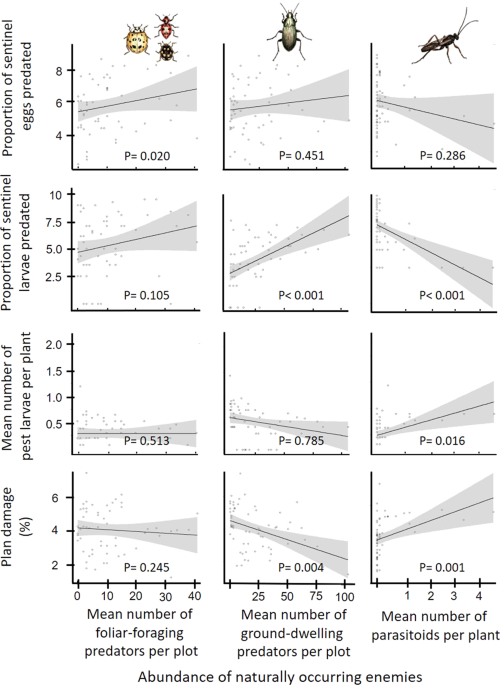Eco Bed Bug Exterminators Dc for Beginners
Table of ContentsThe Facts About Eco Bed Bug Exterminators Dc RevealedEco Bed Bug Exterminators Dc - TruthsEco Bed Bug Exterminators Dc for BeginnersEco Bed Bug Exterminators Dc for DummiesA Biased View of Eco Bed Bug Exterminators Dc
Since pesticides are harmful, they are also possibly hazardous to humans, pets, other organisms, and the setting. People who make use of pesticides or frequently come in contact with them must recognize the family member toxicity, possible health impacts, and preventative procedures to lower exposure to the items they use. Risk, or threat, of making use of pesticides is the potential for injury, or the degree of danger involved in using a chemical under a provided collection of conditions.
Nonetheless, applicators can decrease or virtually eliminate direct exposure-- and therefore decrease hazard-- by adhering to the label instructions, making use of personal protective apparel and devices (PPE), and dealing with the pesticide properly. For example, greater than 95 percent of all pesticide direct exposures come from facial direct exposure, mostly to the hands and lower arms. By using a pair of unlined, chemical-resistant gloves, this sort of direct exposure can be almost removed.
The harmful impacts that take place from a solitary direct exposure by any type of route of entrance are labelled "acute impacts." The 4 courses of exposure are facial (skin), inhalation (lungs), dental (mouth), and the eyes. Acute poisoning is established by analyzing the facial poisoning, breathing poisoning, and oral poisoning of guinea pig.
The Only Guide for Eco Bed Bug Exterminators Dc
Severe toxicity is measured as the quantity or concentration of a toxicant-- the a.i.-- required to kill half of the animals in an examination populace. This procedure is generally shared as the LD50 (dangerous dosage 50) or the LC50 (deadly concentration 50). Additionally, the LD50 and LC50 worths are based on a solitary dosage and are tape-recorded in milligrams of pesticide per kilogram of body weight (mg/kg) of the examination pet or partly per million (ppm).
The lower the LD50 or LC50 value of a pesticide product, the higher its poisoning to people and pets. Pesticides with a high LD50 are the least hazardous to people if used according to the directions on the item label. The persistent poisoning of a chemical is figured out by subjecting test animals to long-lasting exposure to the active ingredient.
The persistent toxicity of a pesticide is harder than severe toxicity to determine with laboratory analysis. Products are categorized on the basis of their relative severe poisoning (their LD50 or LC50 worths). Pesticides that are categorized as extremely harmful (Toxicity Group I) on the basis of either oral, dermal, or inhalation poisoning should have the signal words threat and POISON published in red with a skull and crossbones sign prominently showed on the front panel of the bundle tag.
The acute (solitary dose) dental LD50 for chemical products in this group varies from a trace amount to 50 mg/kg. Direct exposure of a couple of drops of a product taken orally could be deadly to a 150-pound person. https://ecobedbug3xt.wordpress.com/2024/03/20/eco-bed-bug-exterminators-dc-your-ultimate-solution-for-bed-bug-treatment/. Some chemical items have just the signal word risk, which tells you nothing concerning the acute poisoning, just that the item can create severe eye damages or extreme skin irritability
Getting My Eco Bed Bug Exterminators Dc To Work
In this classification, the acute dental LD50 ranges from 50 to 500 mg/kg. A teaspoon to an ounce of this material could be fatal to a 150-pound individual (bed bug treatment). Pesticide products identified as either a little hazardous or reasonably harmless (Poisoning Categories III and IV) are called for to have the signal word CAUTION on the chemical label

All pesticide toxicity values, worths the Consisting of, can be found on the product's Material Safety Product Safety and security (MSDS). Chemical tags and MSDS can be obtained from merchants or produces - https://hub.docker.com/u/ecobedbug3xt. The signs of chemical poisoning can range from a moderate skin irritability to coma or even fatality.
People also vary in their sensitivity to different levels of these chemicals. Some people may reveal no reaction to an exposure that may cause extreme health problem in others (bed bug treatment). Due to potential health and wellness worries, pesticide customers and trainers must acknowledge the typical symptoms and signs of chemical poisoning. The impacts, or signs, of chemical poisoning can be extensively defined as either topical or systemic.
Our Eco Bed Bug Exterminators Dc PDFs
Dermatitis, or swelling of the skin, is approved as one of the most commonly reported topical impact related to pesticide exposure. Signs and symptoms of dermatitis variety from reddening of the skin to rashes site web and/or sores. Some people often tend to cough, wheeze, or sneeze when exposed to chemical sprays. Some individuals respond to the solid smell and annoying impacts of oil distillates utilized as service providers in pesticide products.
This symptom typically subsides within a few mins after a person is gotten rid of from the exposure to the toxic irritant. Nonetheless, a reaction to a pesticide item that causes a person not just to sneeze and cough but also to establish severe acute breathing symptoms is most likely to be a true hypersensitivity or sensitive reaction.
Systemic effects are rather various from topical effects. They commonly take place away from the original factor of contact as an outcome of the pesticide being taken in right into and dispersed throughout the body.